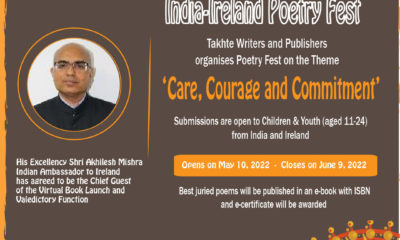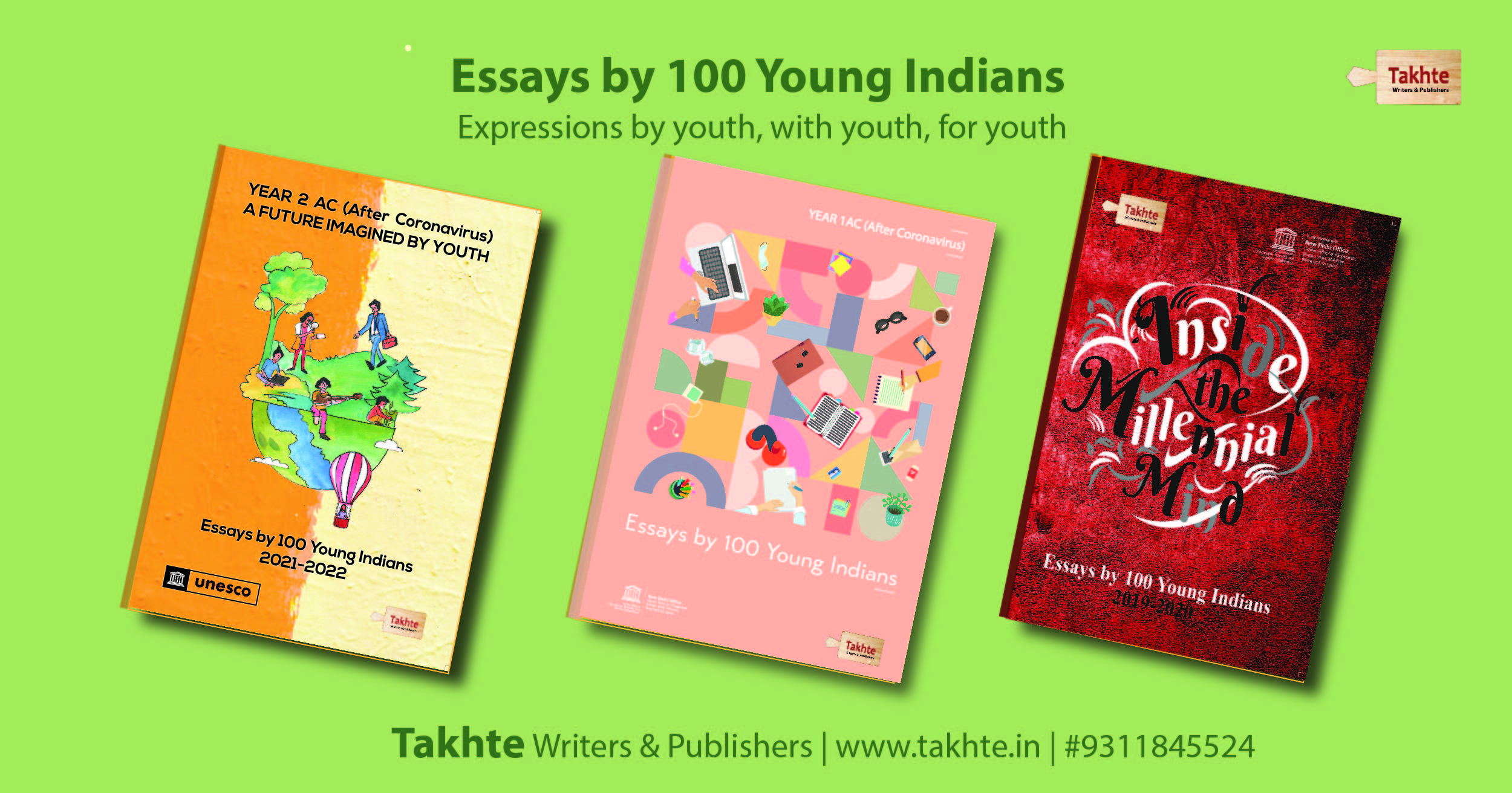Hi-Tech
Checking of growing monopolies of the social media giants, a must!

Apurav Anurag
National Institute of Fashion Technology, Patna
The government of India had recently asked Twitter for emergency blocking of the provocative hashtag “#ModiPlanningFarmerGenocide” and some users amid the farmer’s protest. Twitter initially complied with the government’s notice but later restored most of the user’s accounts. The IT ministry warned Twitter to invoke article 69A of the IT Act, which attracts a 7-year jail term and financial penalty.
In my opinion, the reluctance of twitter to fully comply with the government’s notice must not be taken on a lighter note. First, there can hardly be any justification of the hashtag “#ModiPlanningFarmerGenocide” to be a free speech. No country has described freedom of speech and expression as an absolute right in their constitution. Similarly, the Indian constitution also mentions “reasonable restrictions” to the freedom of speech and expressions if it affects public order, decency, morality etc.
Second, when Twitter blocked Donald Trump’s account, it justified that the tweets by him were likely to inspire others to replicate the violent acts on Capitol Hill. Going by its above justification, it is quite strange that Twitter didn’t find the hashtag “#ModiPlanningFarmerGenocide” as provocative, especially when the Republic Day mayhem had taken place just a week before. A 2018 study by MIT scholars highlights that fake news is 70 percent more likely to be retweeted and travels six times faster than the truthful information on Twitter.
Third, the possibility of misinformation campaign against the farm laws by the external players cannot be ruled out. Whether it was an abrogation of article 370, deadly Galwan Valley clashes or the anti-Citizenship Amendment Act (CAA) protests, the role of fake Twitter handlers to promote an anti-India narrative has been well documented. Moreover, social media companies also lack a robust mechanism to tackle the “fake news” circulating on their platforms.
Fourth, the social media companies themselves don’t follow a consistent policy, and there is a considerable gap between their speech and action. Recently, WhatsApp updated its privacy policy, according to which it would share the private data of the users with Facebook. Interestingly, it applied only to India and not Europe. In 2019, Twitter was alleged to discriminate against SC, ST and OBC activists in suspending and verifying their accounts. In 2017, Snapchat’s CEO Evan Spiegel commented that he doesn’t wish to expand his company into “poor countries” like India. Still, just two years later, its parent company Snap Inc opened its first office in India and also added language support such as Hindi, Gujarati, Punjabi and Marathi.
Ironically, a few tech companies regulate the freedom of speech and expression of millions of users worldwide. The current structure itself looks highly undemocratic and centralized. Moreover, the Cambridge Analytica data scandal is a reminder that these companies are not immune to unethical conducts. India is not the only country where the tech companies are at loggerheads. In 2020, The United States Department of Justice (DoJ) had sued Google, alleging that it abused its dominant position, which harmed its competitors and customers. The ongoing tussle between Facebook and the government of Australia over new legislation is a lesson for other countries as well.
History gives us a lesson that monopolies must be dealt with caution. The East India Company initially started as a trading company in India. After it attained a monopolistic position in the trade, it started meddling in Indian politics and ultimately captured a large Indian subcontinent. The revolt of 1857 was a massive setback for the company, but it was too late. Hence, the growing monopolies of social media companies must be checked. The companies must respect the laws and sovereignty of the land they operate. Else it would set a wrong precedent.
Hi-Tech
India’s Telemedicine Leapfrogs on COVID-19 Back

Namya Mitra
Elpro International School, Pune, Maharashtra
On March 11, 2020, the World Health Organization declared the coronavirus disease 2019 (COVID-19) outbreak as a pandemic, with over 39.3 million cases reported in more than 215 countries as of October-16. The response strategy includes early diagnosis, patient isolation, symptomatic monitoring of contacts, suspected and confirmed cases, and public health quarantine. This disease, transmitted by contact, has wreaked havoc in India- a country with 1.38 billion people and a population density of 464 per km2. In such a comprehensive scenario, a pragmatic system of doctoring has been recognized – Telemedicine.
In layman’s terms, Telemedicine refers to ‘healing from afar,’ supported by over-the-net consultations and prescriptions. Telemedicine, particularly video consultation, has been scaled up and promoted to prevent the risk of transmission amidst the pandemic. Significant cases amongst Health-Care Workers (HCWs) have been witnessed due to a high risk of exposure at the frontline. Telemedicine solves this problem.
On-demand Telemedicine, a 21st-century approach to forward-triage that allows accurate diagnoses, is patient-centred and conducive to self-quarantine that prevents community exposure. Using tailored techniques, Rural Medical Practitioners (RMPs) can remotely identify patients and provide timely medical advice and prescriptions, which otherwise might not be available. Telemedicine can also be a powerful gate-keeping and coordination mechanism to ensure the productive use of emergency units, strengthening the efficacy of emergency-response infrastructure.
However, in most countries, a supervisory framework is paucity to authorize, integrate, and compensate telemedicine services, including in emergency and outbreak situations. The Government of India (GoI) is laudable in this scenario.
Recognizing the scope of Telemedicine in India, the GoI implemented a digital health policy that “Advocates use of digital tools for improving the efficiency and outcome of the healthcare system and lays significant focus on the use of telemedicine services, especially in the Health and Wellness Centers at the grassroots level wherein a mid-level provider/health worker can connect the patients to the doctors through technology platforms in providing timely and best possible care.” Errors in diagnosis or miscommunication might lead to grave consequences for the self-administering patient. To combat these challenges, the policy also underlines how to use ICT sources to transmit data, images, and information in conjunction with other clinical standards, protocols, policies, and procedures for providing care. The GOI also launched the eSanjeevani app to connect patients with government doctors digitally.
Nevertheless, the Government’s real test will be in expanding the network across rural areas. India, even before the pandemic, was unable to provide total healthcare in rural areas. Incentives to entice RMPs to practice in rural areas have failed. When we examine the compatibility of such a telehealth system in India, we come across specific challenges. 65.53% of the population lives in rural areas. 22% of our population is below the poverty line. Thus, the Internet’s penetration and smartphone access in India is low at only 32%.
However, according to a Government publication, Primary, Secondary, and Tertiary Health Centres will be based as Telemedicine Centres, forming a digital three-tier telehealth system analogous to India’s present mechanism. The Government needs to get Primary Healthcare Centres (PHCs) online, which would help people with no smartphones to avail of teleconsultation facilities.
Many advancements have been made before the pandemic, operating as a solution. The Indian Space Research Organization (ISRO) has a telemedicine network, which has augmented in the past three years to connect 45 remote/rural hospitals and 15 super-specialty hospitals, including islands of Andaman-Nicobar and Lakshadweep, the mountains of Jammu and Kashmir, including Kargil and Leh, and some rural/district hospitals in the mainland states of India. The Centre for Development of Advanced Computing, C-DAC, has developed a software system that supports Tele-Cardiology, Tele-Radiology, Tele-Pathology, etc. Such advancements help increase the authenticity and approachability of Telemedicine.
The impact is visible. According to the Economic Times, Teleconsultations have been growing at over 100% week-on-week. There is almost a 50% increase in the number of doctors joining Practo. ‘The new guidelines have given doctors authenticity and confidence to get on to the platform. Queries regarding fever, cough, cold, sore throat and body ache have increased by 200%,’ said Dr. Alexander Kuruvilla, Chief Health Strategy Officer, Practo. The Government’s eSanjeevani OPD platform has completed four-lakh teleconsultations since its launch in April amid the pandemic, providing an optimistic outlook for Telemedicine’s growth and future.
Disasters and pandemics, such as COVID-19, pose unique challenges to every economy and its underlying health infrastructure. Although combatting this virus requires a multifaceted approach, Telemedicine augments healthcare availability, considering its relative advantages over in-person consultations. Telemedicine’s scope as a permanent fixture in India’s health infrastructure, outside the pandemic and in newer fields such as hepatology, maternal care, etc., is worth being further measured, explored, and implemented.
Hi-Tech
Technology: The Gamechanger

Riti Kanwar Solanki
Sophia Senior Secondary School, Bikaner, Rajasthan
Technology, when defined, is applying scientific knowledge for practical purposes, which makes work easier for humans, but now it has become more than just a facility for life. Instead, it has become a way of life. It is slowly but changing the famous saying, i.e., ‘Behind every success story there is a woman’ as for now ‘Behind every success story there is an appropriate use of technology.’
In the 21st century, speed has become the passion of youth, time – the devil and technology – the friend. Everybody has developed a longing to progress and succeed, and do you feel technology helps them cope with the hyped growing process? Well! Of course, as who would choose to eat raw sugar over ice cream. Mobility, efficiency, margin for innovation, energy & time consumption, economic benefits….in short, we have it all. Now, the word technology is a lot more than computers, networks, or the internet. We, as creators of this artificial intelligence, are ourselves surrounded by it throughout. Every little human attempt for ease and convenience gives birth to innovation and technology, which is both good and bad depending on how you look at the glass, either half empty or half full.
“Technology is lust removed from nature. It creates an appetite for immortality on the one hand and threatens universal extinction on the other.” -Don DeLillo
We are turning ourselves slaves of this artificial world. The value of human labor is declining as everybody is now becoming a tech puppet. There are immense expenses, the scope for distraction, environmental complications, and health problems; just as there is an endless list of advantages, so is the list of disadvantages, just as the two sides of the same coin. Despite the reduced employment rates, companies prefer automated and unmanned devices to be skilled and determined youth. Fieldwork is almost equivalent to zero, which leads to a lack of experience and efficiency. Technology, as defined by a famous personality, is a circus as until you are a spectator, you enjoy the show and get back home, but the moment you get involved in tricks, you become a slave and can never get back. But, do you think knowing all merits and demerits of technology is enough? Well! ‘No’ stands as an answer to this question.
For instance, drinking milk is beneficial as it gives strength to our bones and provides overall nutrients for growth, but on the other hand, drinking milk can also lead to the outgrowth of various pathogens on our body and lead to allergies in the same way technology has helped reduce human efforts. Still, it has also started taking up human’s position from time to time, but again it depends on how you look at it – a threat or a boon, a helper or a replacer. As we all know, too much of something is never too good, so is the case with technology. It all depends on how you let it affect yourself and how you make your body adapt to it. India, being a technically advanced nation, has amused the world with its inventions and discoveries from time and again but it has also somewhere or the other given itself a blow. For example, the coming up of ATM (automated teller machine) is a boon as it enables the customer to withdraw cash at any time of need. It has taken up the human position but only for our good. On the other hand, at a few places in India, people have started using robotic waiters instead of hiring traditional human waiters to attract more and more customers; at a few places, automated vending machines have been set up for selling various everyday articles but take a minute to think, – Is this aspect of technology required despite many unemployed out there? The unemployed immigrants who readily work for a sum of money lower than the average salary is even expelled from that also with the coming of such inventions. Technology, at times, kills humanity and hopes, especially in unemployment and poverty. The solution to this can only be the invention and usage of what is required badly and discard all technical luxuries such as domestic robots, telemarketers, unmanned computerized receptionists, etc., and our resolution as an avail to another human.
“Our future success is directly proportional to our ability to understand, adopt, and integrate new technology into our work.” -Sukant Ratnakar
Though the process of accelerating technology is continuous and to some extent, even we as clueless pets are also becoming a part of it but now is the high time when we realize what we are doing and that we are hammering our finger than the nail, now in this global break due to pandemic COVID 19 let us take a minute even to criticize technology than only blindly following it and now let us together take an oath to not be unfair with the upcoming generation and give our kids the opportunities which the robo-babies are enjoying. The coming generation is the unafraid generation; they condemn, segregate, and even protest against what is not suitable for them. They are hungry for the world to be a better place, and for this hungry generation, we have to take a step away from technology to come a step closer to actual technology.
-

 Poems3 years ago
Poems3 years agoPoems
-

 Uncategorized2 years ago
Uncategorized2 years agoOnline Elocution Contest
-

 Poems2 years ago
Poems2 years agoIndia-Ireland Poetry Fest
-

 Legal Talks3 years ago
Legal Talks3 years agoCompliances Relating to the Commercialization of Electronic Devices
-

 Legal Talks3 years ago
Legal Talks3 years agoCUSTODIAL RAPE IN LIGHT OF THE MATHURA GANG RAPE CASE
-

 Art & Culture3 years ago
Art & Culture3 years agoThe Lore of the Days of Yore: Significance of History
-

 Short-story3 years ago
Short-story3 years agoBibek’s visit at his friend’s bungalow
-

 Uncategorized1 year ago
Uncategorized1 year agoPotential Navigators of Knowledge (PNK) Young Authors Awards














